About Garden Share
Dawlish Transition has re-launched its Garden Share scheme, which aims to connect people who canít or donít wish to completely manage their own garden with people who would like to grow things - particularly food crops - but have no access to a garden. Encouraging garden sharing is often one of the elements of a Transition programme Ė one way of raising awareness of the need to move towards more growing and consumption of locally produced food. We would like to hear from garden owners in the Dawlish area who are potentially willing to share their garden, perhaps in return for some of the produce, and from cultivators interested in a garden sharing arrangement. Our role is to bring garden owners and cultivators together and, if required, to provide advice on reaching a mutually acceptable working arrangement. Please contact David Gearing on 01626 888772 or email dawlishtransitiongs@gmail.com
We have four garden share arrangements in operation, in addtion to the Westcliff Primary School Garden that started in 2012.
We are also investigating the possibility of setting up Community gardens and Orchards in different areas of Dawlish.
Progress Report June 2014 - Dawlish Transition Community Garden Share with Westcliff Primary School
| In early May 2012, Sue and Pete Brader made a start by digging over one section of this fenced-in area next to the school, which used to be the garden of the caretaker's house. Max and Julie took over in October 2012. It has been a difficult plot to work on - the soil is stony and hard, there is a lot of rubble and rubbish just below the surface. They have spent much time and effort in clearing this, and in taming the undergrowth, improving the soil, and renovating the greenhouse. |
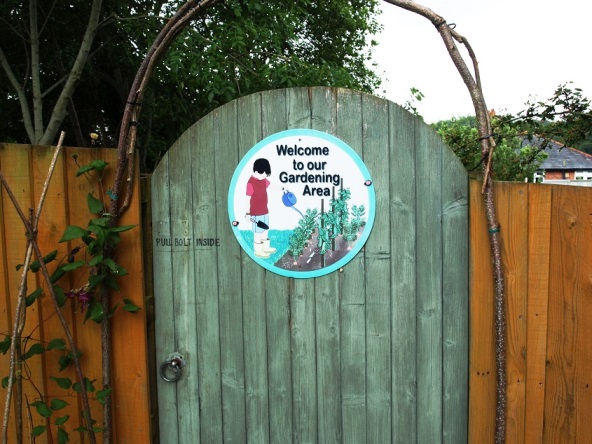 |
| They have now created an interesting and productive garden, which has become a useful facility for teachers at the school, who regularly bring classes to visit. There has been increased interest recently as a result of the 'Farm to Fork' learning initiative, which focuses on making 8-11 year olds aware of where their food comes from and how it is grown. | 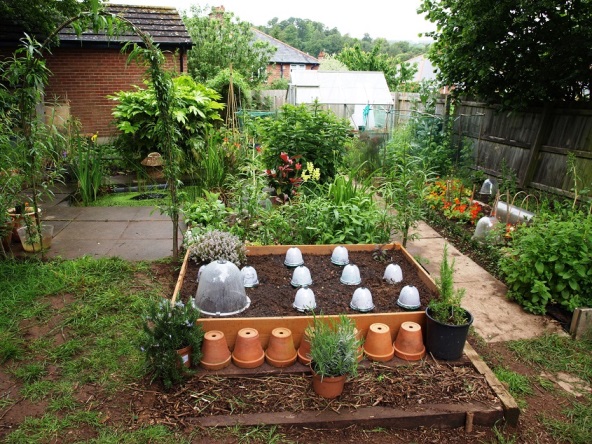
|
| Max has a serious chronic illness that requires several visits per week to hospital; he says that working in the garden gives him the peace he needs and strength to keep going. The pond has resident newts and frogs. The little fountain is powered by a car battery which is trickle-charged by a solar panel. | 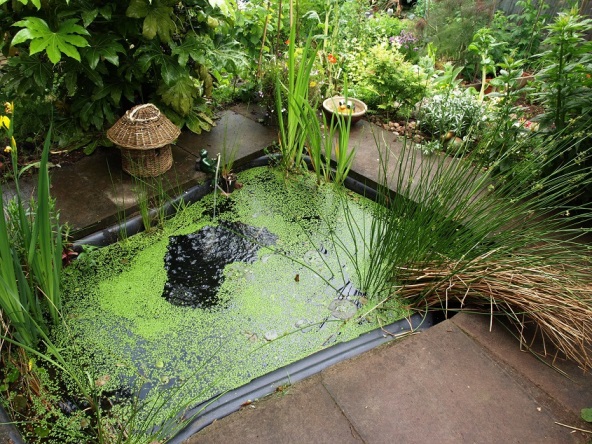 |
| The garden includes several examples of Max's skill at creating living willow structures and in basket weaving. The picture opposite is of living willow arch in the garden. Additionally, in another part of the school grounds, he has built a beautiful willow shelter for the children to play in - they call it an igloo. | 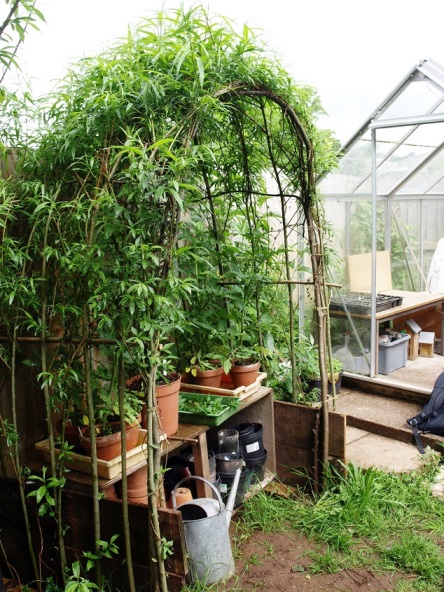 |
| The 'willow igloo' in the school grounds. It has only recently been built and will eventually grow a full covering of greenery | 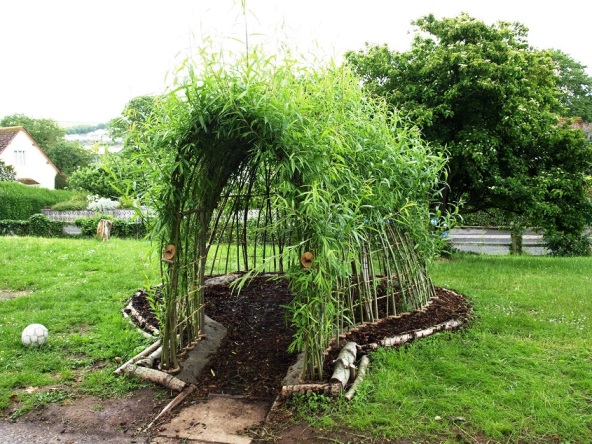 |
| Basketry designs incorporated into the roof and walls of the shelter. It features coloured ropework decorations and weaved designs built into the interior. The fabric floor is covered in play-safe bark and sits on lower layers of carpet and weed-supressing fabric. The edge of the structure is protected against damage by mowers and strimmers. The main willow varieties used are Salix purperea, S. daphnoides and S. viminalis. | 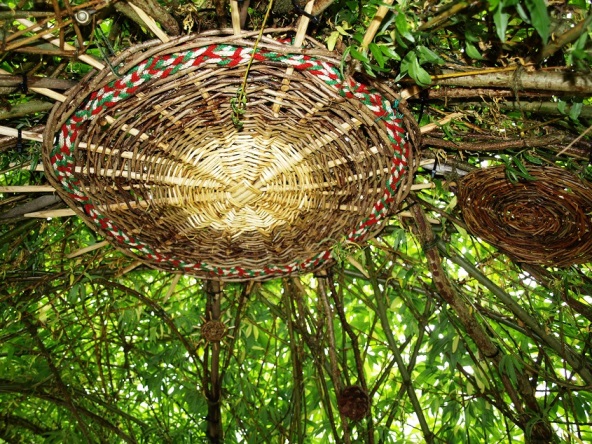 |